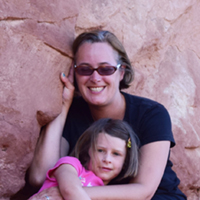Scientists and doctors at hospitals here are pursuing new ways to save lives, improve quality of life, and get to the bottom of medical mysteries on conditions ranging from Parkinson’s disease to everyday backache. We checked in with four Bay Area institutions to learn about their newest accomplishments and works in progress.
STANFORD
A Potential Test and Treatment for Parkinson’s
When a patient exhibits symptoms such as tremors, slowed movements or rigid muscles, a doctor may deduce that the cause is Parkinson’s disease, but there’s currently no test that definitively confirms that diagnosis. There’s also no cure.
Groundbreaking work from a Stanford University School of Medicine scientist could change that scenario on both counts.
Xinnan Wang, associate professor of neurosurgery, pinpointed a molecular defect common in nearly all Parkinson’s patients and found a compound that appears to reverse that defect. Wang co-founded a startup to develop a drug that could possibly stop the progression of the disease or, for patients diagnosed early, even prevent symptoms from developing at all.
“If we can use this to detect early-stage or at-risk populations, that will be a huge benefit,” Wang says. “If our strategy can even slow down the disability for a few years, it would be a huge relief to the burden on society and an improvement in quality of life for the patients.”
Parkinson’s, a progressive disorder that gradually saps patients’ ability to move freely, happens when a group of neurons in the brain that regulate motion start dying. By the time patients start having symptoms, they may have already lost half of these important neurons. Scientists have known for a while that worn-out mitochondria, the “power plants” of cells, might be responsible for these cells dying. If not cleared away, disabled mitochondria can release toxins.
What Wang’s group discovered was why mitochondria were lingering in these cells after they had become defective and started releasing toxins. It turns out that Parkinson’s patients’ cells are unable to remove a tiny molecule called Miro that hitches mitochondria to a cell’s power grid. Wang’s team discovered that among a small group of Parkinsons’s patients, 94 percent had the Miro-removal defect.
Now, Wang hopes clinicians will use her test, which can be performed with a simple skin biopsy, to test their own Parkinson’s patients for the Miro-removal defect. In the meantime, her startup, CuraX, is working hard to prepare for clinical trials of its potential Parkinson’s treatment, which, if approved, would be the first disease-modifying drug for Parkinson’s ever to reach the market.
“I want to get this translated as fast as possible from my lab to clinic,” Wang says.
THE BUCK INSTITUTE FOR RESEARCH ON AGING
An Evolutionary Technique for Studying Alzheimer’s and Stroke
Man may be mightier than a mouse in most respects, but an obscure rodent from Southeast Asia has a trait that humans can only dream of: it can regenerate damaged neuron components. Mus castaneus’ unusual ability could offer hope to victims of stroke, the leading cause of longterm disability in the United States. If only we could figure out how the mouse does it.
That’s exactly the plan of evolutionary biologist Rachel Brem, a professor at the Buck Institute for Research on Aging in Novato.
“In the spinal cord and brain in laboratory mice and in humans, if the axons — those long arms that connect a nerve to another cell — are damaged, they usually don’t grow back. This is part of the reason for poor prognosis among stroke patients,” Brem says.
But if Mus castaneus’ axons get damaged or destroyed? They grow back. No one knows why or how. “The hope is that we discover how nature engineered the ability to regenerate these components of the nervous system in this mouse. If we can learn how nature built it, maybe we can use that insight to help resolve similar problems [for patients] in the clinic,” Brem says. For instance, Brem, collaborating with other Buck researchers and Diana Bautista, a UC Berkeley associate professor of cell and developmental biology, may find that Mus castaneus, unlike the everyday house mouse, has one or more proteins that make the regeneration possible. That could lead to production of a drug to help stroke victims restore lost speech or motor abilities.
Brem developed a revolutionary technique for pinpointing a single gene that causes one species to differ from another. She recently received a $3.8 million Transformative Research Award from the National Institutes of Health to use her method, which involves breeding Mus castaneus with an ordinary lab rat to create a hybrid mouse with DNA from both species. Like all organisms, the hybrid mouse will have two copies of each gene, one from its mother and one from its father. The researchers will work methodically through the mouse’s whole genome, blocking the mother’s gene, then the father’s gene, until they find the gene that confers the ability to regenerate the vital neuron component.
In another project, Brem’s lab will use the same technique to pursue advances in the fight against Alzheimer’s disease by pinpointing genes, present in two related worm species, that might confer resistance to neurodegeneration.
UCSF
Understanding Back Pain and Aiming to Make Treatment Opioid-Free
If this hasn’t happened to you, ask around your office; chances are that it’s happened to the person who works to the right or left of you.
You wake up with almost unbearable pain in your lower back. You make your way to the doctor with difficulty, only to be told there is no clear cause and you should do some stretches or wait it out.
In the U.S., low back pain is the most common cause of disability in young adults, according to the World Health Organization. For many patients, not knowing what to do about it significantly compounds the agony.
“It’s a complex condition; there’s no one-size-fits-all solution,” says Jeffrey C. Lotz, professor and vice chair of research at the University of California, San Francisco School of Medicine.
“Some of the data suggest it’s only 10 percent of the patients who ever really understand or can figure out why [they’re in pain]. Clinicians kind of throw up their hands.”
Figuring out individualized, effective and nonaddictive treatments for low back pain is the aim of the new UCSF Core Center for Patient-centric, Mechanistic Phenotyping in Chronic Low Back Pain, aka UCSF REACH, which Lotz is leading. The center will be established with an almost $30 million National Institutes of Health grant.
For doctors, what causes low back pain and how best to treat it are topics of confusion and controversy. Some focus on psychosocial aspects — as when patients are so afraid of aggravating the pain that they limit activity, weakening muscles and making the problem worse. Some doctors look more for signs of physical injury. The new center will assemble researchers and practitioners of different medical backgrounds and persuasions who will delve into data, using machine learning to discern patterns among thousands of back patients followed by UCSF, seen either remotely or on site.
As well as being a major cause of missed work, back pain is the second leading reason for opiate prescriptions, after cancer. Reducing need for opioids is another priority for researchers both at UCSF and nationwide, and the center may test methods such as combining virtual reality goggles or antidepressants with cognitive behavior therapy to address pain from the psychological angle.
KAISER PERMANENTE
A New Way to Categorize Sepsis and Target Treatment
Kaiser Permanente began focusing on sepsis — a life-threatening inflammatory response to severe infection that affects the whole body — more than a decade ago, when experts became aware that sepsis was a factor in as many as one in two hospital deaths. Worldwide, an estimated 5 million or more people die of sepsis each year.
“The global impact is pretty staggering,” says Vincent Liu, a critical care physician and research scientist at Kaiser Permanente’s Division of Research. “The frustrating thing is that despite 50 years and probably hundreds of millions in investment, we have zero targeted drugs for sepsis.”
Liu led a team of researchers who posited that what may be holding back the discovery of novel treatments for this age-old menace was medicine’s failure to differentiate different groups of sepsis patients. An elderly patient with infected bedsores and a young adult with pneumonia are very different patients, but both could develop infections labeled as sepsis. The team used machine learning to identify 42 subtypes of treatment groups in sepsis patients, which Liu hopes will help make future clinical trials more targeted.
“Right now in sepsis we’re at a similar era to what we once labeled as just ‘cancer’ or perhaps ‘lung cancer’ or ‘breast cancer,’ ” he notes. “But the treatments in oncology today have become highly targeted, such that a broad term like ‘lung cancer’ tells them almost nothing about prognosis or treatment. By unpacking these treatment patterns, our hope is to understand how we can treat sepsis patients differently.”
Read more about scientific research being done in the Bay Area in our series of articles on the science of aging, or delve into the sci-fi world of DNA.
This article originally appeared in Marin Magazine under the headline “Game Changers”.

Carrie Kirby spends a lot of time asking people about something they think about but rarely talk about: money. Her work on personal finance, business and technology has appeared in San Francisco Magazine, Consumers Digest, Wise Bread and more publications. Carrie’s most recent work about her other love, travel, appears in The Best Women’s Travel Writing: Volume 10. She lives on an island (Alameda) with her husband and three kids, and blogs about getting them all where they need to go without owning a car at carfreemom.com.


